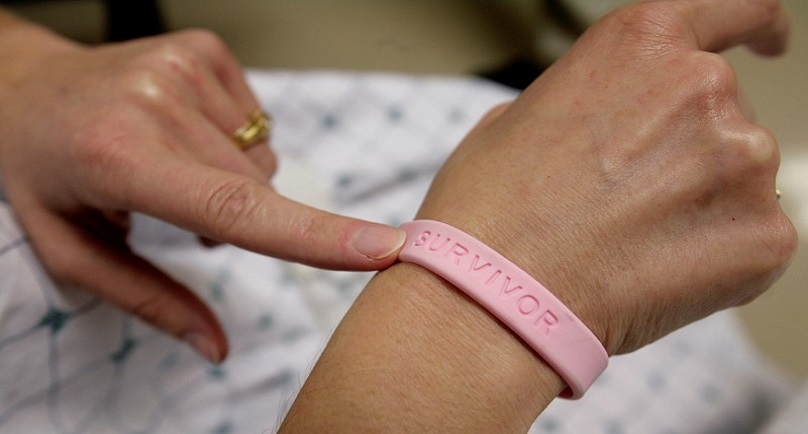Image: A cancer patient’shows off her breast cancer survivor bracelet REUTERS/Jim Bourg
By Andrew M. Seaman
The number of new cancer diagnoses in the U.S. is largely steady while the number of cancer deaths continues to decline, according to a new report from the nation’s leading cancer advocacy group.
This year, the U.S. will see nearly 1.7 million new cancer cases and nearly 600,000 cancer deaths, according to American Cancer Society projections published in CA: A Cancer Journal for Clinicians.
The report’s authors point out that cancer continues to be a leading cause of death in the U.S., however, and new diagnoses for some cancers are increasing.
“It’s kind of a good news, bad news story,” said ACS’s Rebecca Siegel, who is based in Atlanta.
Cancer deaths fell by 23 percent in the decade before 2012, the latest period for which data are available.
The decrease represents about 1.7 million fewer deaths since rates peaked in 1991, says the report.
The decrease is largely due to fewer deaths from breast, colon, rectal and prostate cancers. Also, there are fewer lung cancer deaths as a result of fewer people smoking.
Breast cancer remains the leading cause of cancer death for women ages 20 to 59, and leukemia is the leading cause of cancer death among men ages 20 to 39. Lung cancer is the leading cause of cancer death for older men and women.
The number of new cancer diagnoses appears mostly stable in women. Among men, the rate of new cases fell 3 percent per year between 2009 and 2012, with the drop largely due to a reduction in prostate cancer screening.
Rates of some cancers are increasing, including those often associated with obesity.
For example, incidence and mortality rates for endometrial cancer are up, said Siegel, “likely due to the obesity epidemic.”
The report says endometrial cancer risk climbs 5 percent with every five-point gain in body mass index, which is a measure of weight in relation to height.
Another area of concern are gaps between races, Siegel told Reuters Health.
For example, black men have the highest rates of new cancer diagnoses and deaths. In fact, black men have higher diagnosis and death rates than non-Hispanic white men for every malignancy except kidney cancer.
“The improvements in cancer prevention and early detection and treatment aren’t disseminated equally among the population,” said Siegel.
“Extending these improvements to underserved populations would accelerate a decline in death rates,” she said.
The report too says existing tools to fight cancer need to be applied to all segments of the population. Also, advancing the fight will require more research and funding.
“A lot of progress has been made, but there is more work to do,” said Siegel.
SOURCE: http://bit.ly/1mL1Unx CA: A Cancer Journal for Clinicians, online January 7, 2016.
Copyright 2015 Thomson Reuters. Click for Restrictions.


